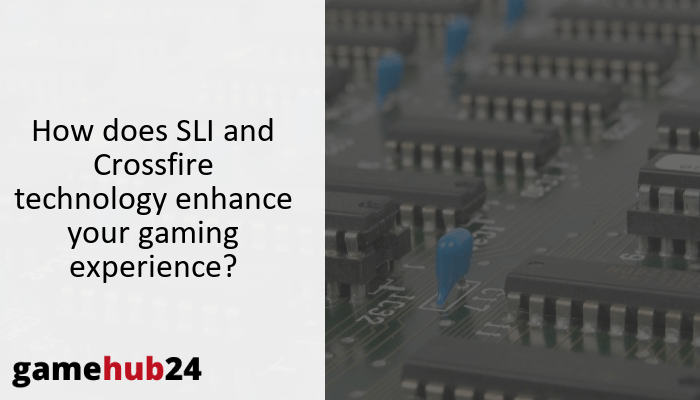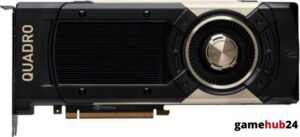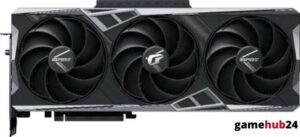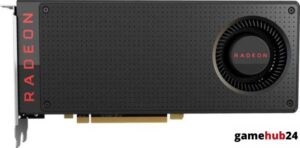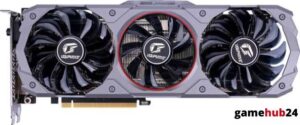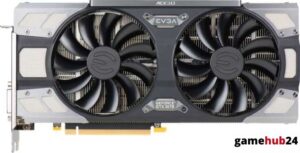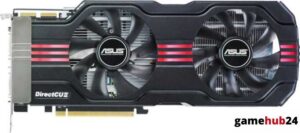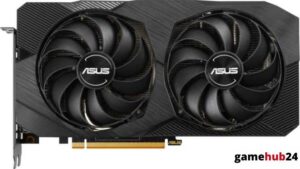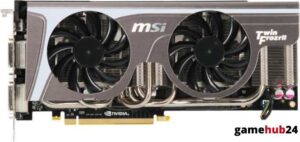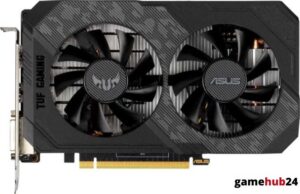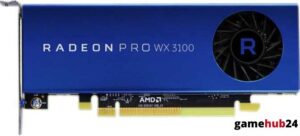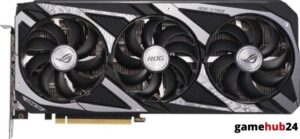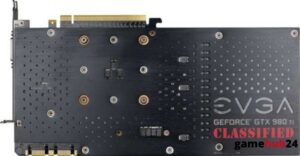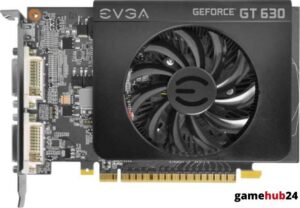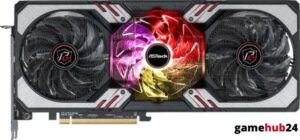The cutting edge of high-performance computing is represented by SLI and Crossfire technology, which is completely changing our understanding of multi-GPU technology. These innovations from Nvidia and AMD, respectively, have completely changed the way that graphics processing units (GPUs) and video cards work, which is a huge step forward in the field of advanced computing.
Through the simultaneous use of many Graphics Processing Units (GPUs), multi-GPU technology improves computing performance. This technique enhances graphics capabilities, allowing systems to easily handle high-resolution, resource-intensive jobs. It is embodied by Nvidia’s SLI and AMD’s Crossfire. Compatibility and workload allocation are two areas where SLI and Crossfire diverge; although Crossfire supports a greater variety of GPU combinations, SLI requires identical GPUs. Compatibility with hardware and adequate cooling are prerequisites for both approaches to avoid overheating. With improved gameplay, sharper graphics, and more detailed pictures, they have a big impact on video game performance and graphics.
- Multi-GPU technology uses multiple GPUs for improved performance.
- Nvidia’s SLI and AMD’s Crossfire are examples of Multi-GPU technology.
- SLI requires identical GPUs, while Crossfire supports different GPU combinations.
- Both technologies need compatible hardware and adequate cooling.
- SLI and Crossfire greatly enhance video game graphics and performance.
What are the basics of Multi-GPU technology?
The foundation of high-performance computing is multi-GPU technology, which uses the combined power of several Graphics Processing Units (GPUs) to provide improved speed and resolution in demanding applications, especially video games. This technique makes it possible to use two or more GPUs simultaneously to process graphical data more effectively and efficiently. It is implemented in Nvidia’s Scalable Link Interface (SLI) and AMD’s Crossfire. This technology is significant because it can greatly improve a system’s graphical capabilities, making it more capable of handling jobs requiring a lot of resources and high resolution.
What is a Graphics Processing Unit (GPU)?
A specialized electronic circuit called a Graphics Processing Unit (GPU) is made to quickly operate and change memory in order to speed up the production of images in a frame buffer that are meant to be output to a display device. GPUs are a crucial component of computer systems, especially for applications like high-definition video processing and 3D rendering that demand intensive graphics calculations. A system’s capacity to produce fluid, high-quality pictures for video games and other graphics-intensive applications is largely dependent on the GPU’s power.
How does a Video Card function?
A computer system’s video card, sometimes referred to as its graphics card, serves as the central component for its visual output. In addition to housing the GPU, it serves as a conduit between the computer and the display device. Data is sent from the CPU to the video card, which uses its built-in GPU to process it before sending it to the display device. The effectiveness of this procedure has a direct bearing on the caliber and functionality of the visual output produced by the system.
Were you aware? Originally, “Scan-Line Interleave,” a word used in 3dfx’s Voodoo Graphics card series, was what Nvidia’s SLI technology stood for. But SLI became ‘Scalable Link Interface’ after Nvidia bought 3dfx and reused the technology.
What is Multi-GPU technology and why is it important?
A high-performance computing architecture called multi-GPU technology enables a system to employ many GPUs at once. This technology is essential for activities requiring a lot of graphics computation, and it is represented in AMD’s Crossfire and Nvidia’s SLI. Multi-GPU technology greatly improves the system’s capacity to tackle resource-intensive, high-resolution tasks by distributing the effort among several GPUs. This enhances the user experience overall and produces better visuals and higher frame rates, especially in graphics-intensive apps like video games.
What is Nvidia’s Scalable Link Interface (SLI)?
A multi-GPU approach called Nvidia’s Scalable Link Interface (SLI) allows the use of two or more video cards in tandem to generate a single output. SLI provides a large boost in processing power, allowing graphics-intensive apps to run at higher resolutions and with more fluid gameplay. Depending on the number of GPUs employed, the technique effectively doubles or triples the processing capability by using a parallel processing algorithm for the cooperative operation of GPUs.
What is the concept behind SLI?
SLI is based on the idea of parallel processing, which divides the workload among several GPUs to boost processing capacity overall. Higher resolutions and more fluid gameplay in graphically demanding apps are made possible by this. Split Frame Rendering (SFR) and Alternate Frame Rendering (AFR) are the two main rendering modes used by SLI to accomplish this. The way the workload is distributed among the GPUs is determined by these modes.
How does Alternate Frame Rendering (AFR) work in SLI?
The GPUs render frames alternately in Alternate Frame Rendering (AFR), where one GPU works on the current frame while the other gets ready for the next. By practically doubling the frame rate, this technique produces smoother gameplay and graphics. However, because of the alternating nature of the frame rendering, AFR could occasionally result in micro-stuttering.
A quick tip: Make sure your power supply unit (PSU) has the wattage to support all of your components when configuring a multi-GPU setup. The power consumption of running several GPUs can be greatly increased, and hardware damage or instability can result from an inadequate PSU.
What is the role of Split Frame Rendering (SFR) in SLI?
Another rendering option used in SLI is called Split Frame Rendering (SFR), in which each GPU renders a portion of a single frame that has been divided into pieces. With a more evenly distributed workload among the GPUs, this approach yields more reliable performance. However, because of the expense associated with splitting and merging the frame parts, SFR might not always offer as large of a performance improvement as AFR.
How does AMD’s Crossfire technology compare to SLI?
With a few significant distinctions, AMD’s Crossfire technology is a multi-GPU solution comparable to Nvidia’s SLI. A wider range of compatibility is made possible via Crossfire, which supports a variety of GPU models within the same architecture. Additionally, it employs a distinct technique to divide the workload across the GPUs, combining Alternate Frame Rendering (AFR) and Split Frame Rendering (SFR) based on the demands of the application.
What is the principle of AMD’s Crossfire?
AMD’s Crossfire and Nvidia’s SLI share a similar concept of using several GPUs to boost total processing capability. Crossfire varies, nevertheless, in terms of workload distribution and compatibility. It employs a combination of SFR and AFR for workload distribution and supports a broader range of GPU combinations, adjusting to the demands of the application for peak performance.
How does Crossfire utilize DirectX and OpenGL?
To improve performance, Crossfire makes use of two popular graphics APIs: DirectX and OpenGL. Through the use of these APIs, Crossfire is able to more efficiently divide up the rendering task among the GPUs, which enhances performance for DirectX and OpenGL applications. Because of this, Crossfire is an adaptable option for a variety of graphics-intensive applications.
What are the differences between SLI and Crossfire?
Although they are both multi-GPU systems, SLI and Crossfire are not the same. Nvidia created SLI, which normally requires identical GPUs and communicates between the GPUs via a special SLI bridge. Conversely, AMD’s Crossfire technology facilitates inter-GPU communication via the PCIe bus of the system and supports a broader variety of GPU combinations. Furthermore, Crossfire has the ability to dynamically switch between the two forms of workload distribution—AFR and SFR—based on the demands of the application.
What are the hardware requirements for SLI and Crossfire?
SLI and Crossfire require essentially the same hardware: two or more compatible GPUs, a suitable power supply, and a compatible motherboard with multiple PCIe slots. For inter-GPU communication, SLI usually needs a separate SLI bridge, although Crossfire can make use of the PCIe bus in the system. Additionally, because numerous GPUs increase power consumption and heat output, both technologies need adequate cooling to avoid overheating.
What is the importance of PCI Express (PCIe) in Multi-GPU setups?
A multi-GPU setup’s core is PCI Express (PCIe), a high-speed serial computer expansion bus standard. It facilitates high-speed data transfer by acting as the physical link between the GPUs and the rest of the system. A multi-GPU setup’s performance can be greatly impacted by the amount of PCIe lanes and the PCIe standard version being used; more lanes and more recent versions offer faster data transfer rates.
How does GDDR5 Memory affect the performance of SLI and Crossfire?
The performance of SLI and Crossfire configurations is greatly influenced by the GDDR5 memory that is frequently found in current GPUs. It offers quick, dedicated memory to the GPUs for handling and storing graphics data. A multi-GPU setup’s performance can be greatly impacted by the quantity and speed of GDDR5 memory in the GPUs; greater memory and faster GPUs enable better resolutions and more fluid gameplay.
What role does the Power Supply Unit (PSU) play in these setups?
In SLI and Crossfire configurations, the Power Supply Unit (PSU) is essential since it supplies the GPUs and the rest of the system with the power they require. A high-wattage PSU is usually needed for multi-GPU installations because the power consumption of many GPUs increases. Selecting a PSU with adequate wattage for the configuration is essential since a PSU with too little power might cause instability in the system or possibly harm the components.

How do SLI and Crossfire impact video game graphics and performance?
By utilizing the power of several GPUs, SLI and Crossfire can have a tremendous impact on the graphics and performance of video games. Higher resolutions, more fluid gameplay, and more detailed graphics are all made possible by them, which improves the overall gaming experience. But depending on the game and the setup of the system, these technologies may or may not be beneficial. While certain games may experience noticeable performance improvements, others may see little to none at all.
How do these technologies enhance 3D rendering and high-definition video?
SLI and Crossfire distribute the workload across multiple GPUs to improve high-definition video and 3D rendering. Faster processing of graphics data makes it possible to produce smoother 3D animations and better-quality video playback. These tools can be especially helpful for jobs like 3D modeling and video editing that call for complex graphical calculations.
What is the effect of SLI and Crossfire on frame rate?
By utilizing the capabilities of multiple GPUs, SLI and Crossfire can dramatically improve the frame rate in games and other graphics-intensive tasks. These technologies can effectively double or even triple the frame rate, leading to smoother gameplay and visuals, by distributing the rendering job among the GPUs. However, the game and the setup of the system can affect the real performance improvement.
How does video memory influence the performance of video games?
Video game performance is greatly influenced by video memory, or VRAM. It offers quick, dedicated memory to the GPU for handling and storing graphics data. A game’s performance can be greatly impacted by the quantity and speed of its VRAM; larger VRAM supports higher resolutions and more intricate textures, while faster VRAM allows for speedier processing of graphical data. Each GPU uses its own VRAM in multi-GPU configurations such as SLI and Crossfire, hence doubling or tripling the total VRAM available for graphical processing.

